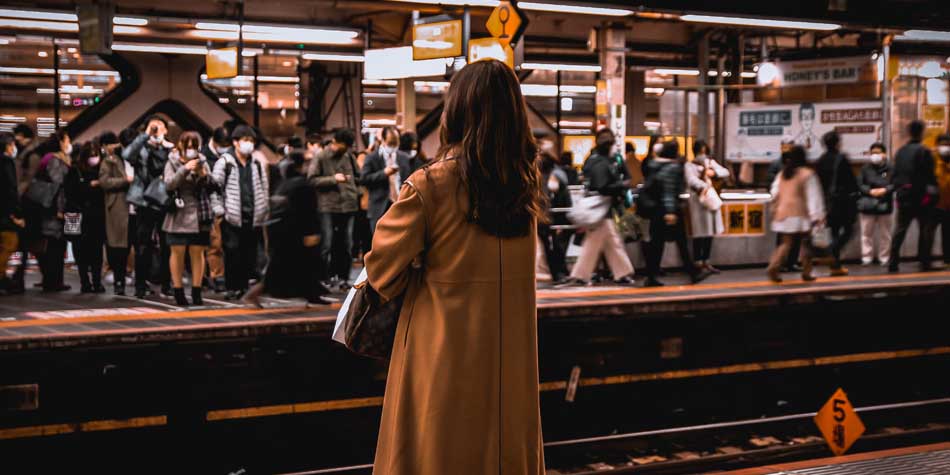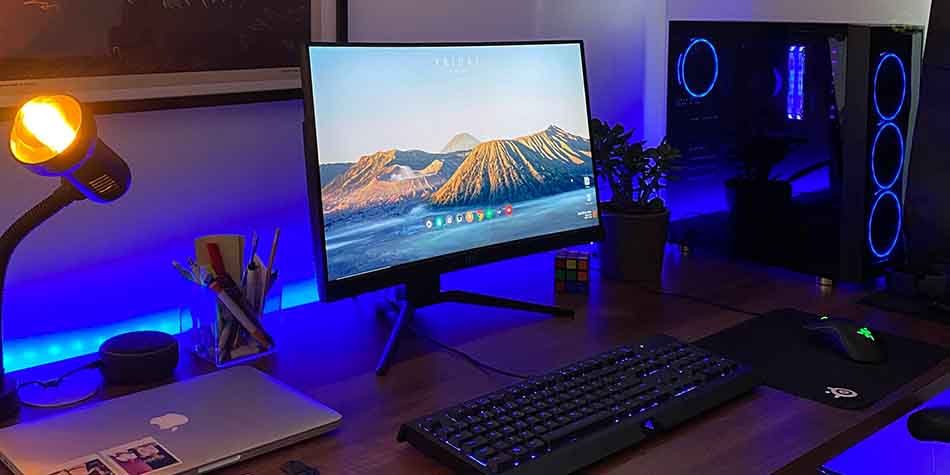Photo by Louie Martinez on Unsplash
Explore some key points you must know about Japanese work culture for a 3D artist. Make the most of your experience working in Japan.
Japan is often known for its long working hours and intense focus on work. However, for foreigners adjusting to this new culture can be difficult. In this blog post I will explore some of the key points you should know about Japanese work culture in order to make the most of your experience living and working here.
I’ll also provide some tips for how to manage your time efficiently and maintain a healthy work-life balance in Japan. So whether you’re a recent graduate looking for an entry level position, or you are a Senior Character Artist trying to boost your career, read on for all you need to know about Japanese work culture!
Inside this post:
My personal experience
I’ve been working as a 3D environment artist in the Japanese game industry for 7 years. It’s been a great experience, and I’ve had the chance to work on some really cool projects. I originally moved to Tokyo to pursue my dream of working in the video game industry, and I’m glad I did. The development process is very different here than in the West, and I’ve learned a lot about 3D art and game development in general.
I was also able to improve my Japanese language skills, which was essential for working in the industry here. Overall, it’s been a great experience, and I’m grateful for the opportunity to have worked in the Japanese game industry.
Japan's Work Culture

Photo by Bohdan Maylove on Unsplash
For many foreigners, the idea of working in Japan can be both intriguing and daunting. There are stories of long hours, intense pressure, and strict hierarchies, but there are also tales of camaraderie, loyalty, and incredible work ethic. So what is the reality of Japanese work culture for a 3D artist?
Is not a walk in the park
For starters, it’s important to understand that the Japanese workplace is very different from what you may be used to. Hierarchy is important, and you will be expected to show respect to your elders and superiors. The office environment is generally quite formal, and colleagues may not necessarily be friends outside of work. Additionally, the language barrier can be a challenge, especially if you don’t speak Japanese fluently.
Some positive aspects
However, there are also many positive aspects about Japanese work culture for a 3D artist. The country has one of the lowest levels of workplace stress in the world, and workers are generally very dedicated to their jobs. There is also a strong sense of camaraderie among colleagues, and many people form close bonds with their coworkers. Moreover, despite the long hours, workers in Japan generally have more leisure time than their counterparts in other countries.
So if you’re considering working in Japan, it’s important to go into it with your eyes open. There will be challenges, but there are also many rewards to be found.
Is Work Life Balance even possible?

Photo by Chris Fuller on Unsplash
As a foreigner working in Japan, it can be difficult to achieve work life balance. The pressure to overwork is high, and managers often expect employees to be available at all hours of the day. This can make it difficult to find time for family, friends, and other important aspects of life. This also can have a great impact on mental health.
Tips to achieve Work Life Balance
First, try to stick to a budget. This will help you avoid overspending and leaves more time for other pursuits. Second, schedule your work hours in advance. This will allow you to better plan your free time and avoid last-minute changes that can disrupt your personal plans. Finally, remember to communicate with your manager. Let them know your availability and work together to find a schedule that works for both of you. By following these tips, you can achieve work life balance while working in Japan.
6 Facts About Japanese Work Culture for a 3D Artist
1. Strong divide between work and private life
Personal information is rarely shared, and work is generally kept separate from home life.
In the Japanese companies I’ve worked on the animation and game industries, people don’t usually share their LINE or social media accounts with each other. When talking about young members, like new-graduates, is more common to share this information but is not as common as in other countries.
This can be beneficial, as it creates a more professional environment. However, it can also be difficult to build relationships with co-workers. In many cases, work friendships are simply not possible. This can make it hard to feel like part of a team, and can lead to frustration and isolation. It’s important to be aware of this divide if you’re considering working in a Japanese office. Keep in mind that you may have to work a bit harder to build relationships with your colleagues.
2. Lunch breaks are not what you expect

Photo by Ryoji Iwata on Unsplash
In most Japanese companies, people tend to eat lunch on their own. It’s not that they don’t like their coworkers, it’s just that it’s not really the custom to go out to lunch in groups. Of course, there are always exceptions to the rule. If you work in a game company, for instance, it’s not uncommon for employees to go out for lunch together on a regular basis. And if you have a group of foreigners in your company, they will probably also go out to lunch together. But for the most part, people in Japan tend to eat lunch alone.
Lunch is considered a time to relax and recharge, so it’s not unusual for people to take their time and enjoy a leisurely meal by themselves or take a nap until is time to resume work.
Also read Best Monitor for CG Artist in 2022
3. Putting overtime in context
It’s no secret that Japanese workers put in a lot of overtime. In fact, the country has its own word for death by overwork: Karoshi.
But just how bad is the situation? A recent study found that Japanese workers put in an average of 49 hours of overtime per month, more than any other country in the world. And it’s not just because they’re workaholics – much of the overtime is due to unrealistic deadlines and excessive pressure from employers.
The game industry is particularly notorious for its long hours, and it’s not uncommon for workers to pull all-nighters to finish a project on time. As a result, many Japanese end up feeling stressed and burnt out. It’s no wonder that karoshi is such a serious problem in the country.
Also Read: 15 Best Villains in Video Games
4. Is extremely difficult to fire someone
Under the Japanese system, it is very difficult to fire someone from a company. In fact, most companies will go to extreme lengths to avoid having to do so. Instead of simply firing an employee who is causing problems, they will often try to transfer them to another department or give them additional training.
Only as a last resort will they actually let someone go. This can cause big problems for companies, as it can be difficult to get rid of problem employees. It can also lead to a lot of frustration for those who are trying to do their job well but are being held back by those who aren’t pulling their weight. Nevertheless, this is part of the japanese culture and, whether we like it or not, it’s not likely to change anytime soon.
5. The company will pay for your commute
In Japan, many companies take care of their employees’ commute expense by giving them a monthly train fee. This is one of the many benefits that Japanese companies offer to their employees. If your company does not offer this benefit, you should take a closer look at the company before joining. The cost of commuting by train in japan can be expensive, and it can add up quickly if you are not getting help from your company.
Many Japanese companies also offer other benefits to their employees, such as health insurance and paid vacation days. So, if you are considering working for a Japanese company, make sure to check out all of the benefits they offer before making your decision.
You might also want to read about 3D Artist Salaries in Japan.
6. Drinking Parties or Nomikai

Photo by Gerrie van der Walt on Unsplash
A Nomikai (飲み会) is a drinking party that is commonly held in Japan after work hours. It is seen as a way to bond with your boss and coworkers, and as a result, it is a very common practice in the working culture. I have experienced Nomikais many times during my time in the game industry, and they can be either enjoyable or uncomfortable depending on the situation. As in the workplace, hierarchy is very important at Nomikai, with the boss sitting at the head of the table and everyone else deferring to them. This can make for an uncomfortable atmosphere if you’re not used to it, but it’s also a chance to get to know your boss and superiors better.
Drinking is obviously a big part of Nomikai, so if you’re not a drinker, it can be hard to participate. However, it’s still possible to enjoy yourself even if you’re not drinking, and overall I think Nomikais are a great opportunity to experience Japanese culture firsthand.
So what about coming to Japan to work?
Any foreigner who has ever worked in Japan can tell you that it can be a bit of a culture shock. From the regimented work schedule to the formality of social interactions, there are definitely some adjustment period to Japanese society. However, once you get used to the Japanese work culture for a 3D artist, Japan is actually a great place to work.
The quality of life is excellent, and you can be part of some world-renowned projects if you work in the game or animation industries. Of course, the language barrier can be tough at first, but there are plenty of resources available to help you learn Japanese. Overall, if you’re willing to put in the effort, working in Japan can be a very rewarding experience and a good way to boost your career.
In conclusion
Japan is a great place to start if you are interested in animation, game design, or any other creative industry and want to work with the best of the best. It’s not easy by any means, but the rewards can be worth all the effort for those who have what it takes.
If you want to learn more about how to make the move and what to expect, be sure to check out our other articles related to Japanese work culture for a 3D artist. Thanks for reading!
Also Read: Midjourney Art: Artificial Intelligence

Nyx, Editor at Vertex Mode, is also an experienced 3D Artist in gaming and film, sharing insights on Digital Art and its creators.

